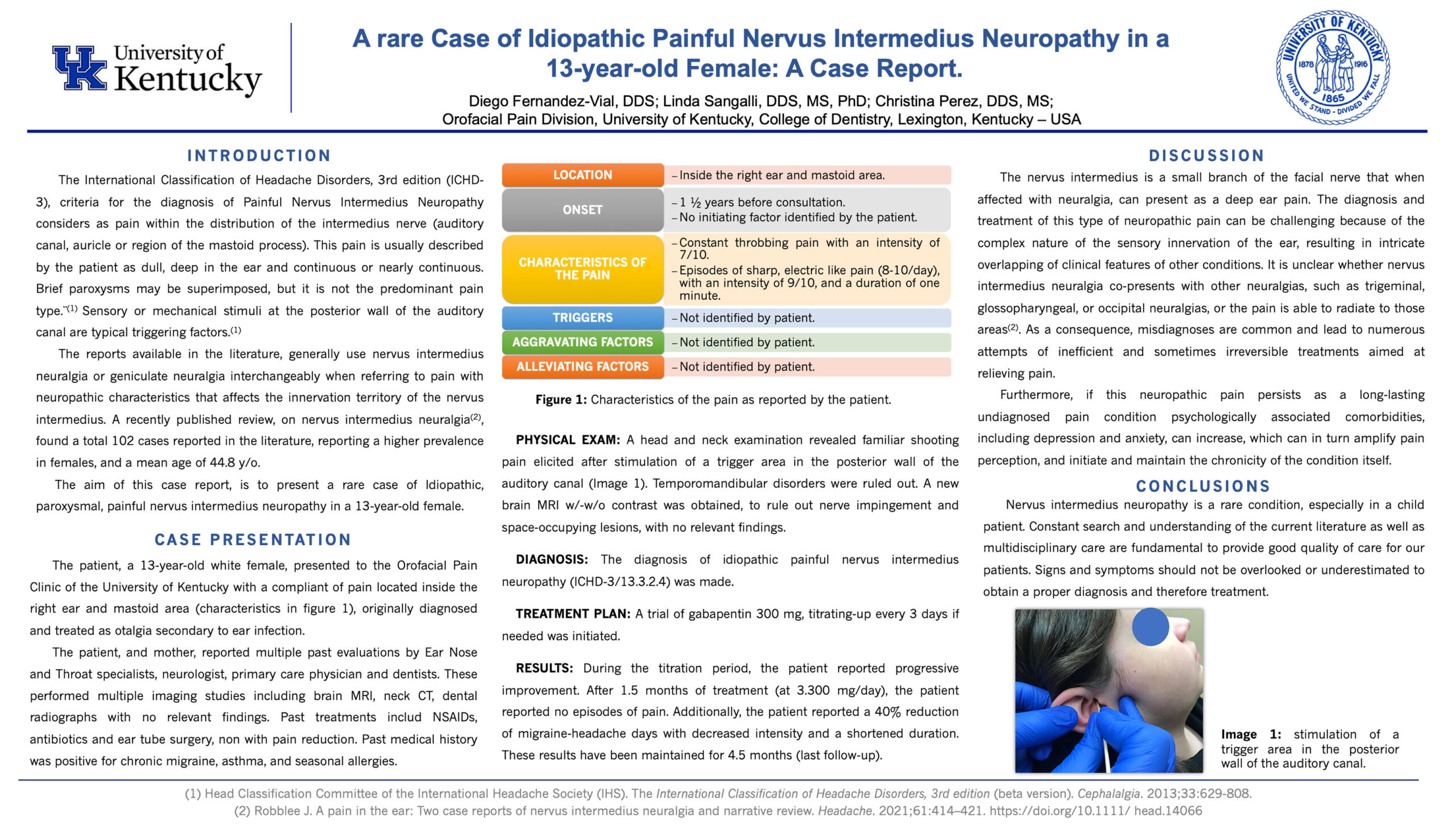This POSTER has VIDEO and IMAGE elements. Hover over the image above and use the ![]() arrows to navigate
arrows to navigate
A Rare Case of Idiopathic Painful Nervus Intermedius Neuropathy in a 13-year-old Female: A Case Report.
Author(s): Fernandez-Vial, D, Sangalli, L, and Perez, C.
Affiliations: Department of Oral Health Science, Division of Orofacial Pain, University of Kentucky, College of Dentistry, Lexington, Kentucky, USA
Aim of investigation: To present a 13-year-old female with a complaint of pain located inside the right ear and mastoid area, described as constant throbbing/dull with an intensity of 7/10, and a frequency of 8-10 times per day becoming sharp reaching an intensity of 9/10, lasting for 1-2 minutes. Past treatments: NSAIDs, ear tubes surgery, multiple evaluations by ENTs, primary care physician and dentist. Exams: Brain MRI, neck CT, dental radiographs.
Methods: A head and neck examination revealed familiar shooting pain elicited after stimulation of a trigger area in the posterior wall of the auditory canal. No signs of ear inflammation. TMDs were ruled out. A new brain MRI w/-w/o contrast was obtained, with no relevant findings.
Results: The diagnosis of idiopathic painful nervus intermedius neuropathy (ICHD-3/13.3.2.4) was made. A trial of gabapentin 300 mg, titrating-up every 3 days if needed was initiated. During the titration period, the patient reported progressive improvement. After 2.5 months of treatment (at 3.300 mg/day), the patient reported no episodes of pain. Additionally, the patient reported a 40% reduction of migraine-headache days with decreased intensity and a shortened duration. These results have been maintained for 2 months (last follow-up).
Conclusions: Nervus intermedius neuropathy is a rare condition, all the more in a child patient. Constant search and understanding of the current literature as well as multidisciplinary care are fundamental to provide good quality of care for our patients. Signs and symptoms should not be overlooked or underestimated to obtain a proper diagnosis and therefore treatment.
Acknowledgements and/or Funding Source: None




Leave A Comment